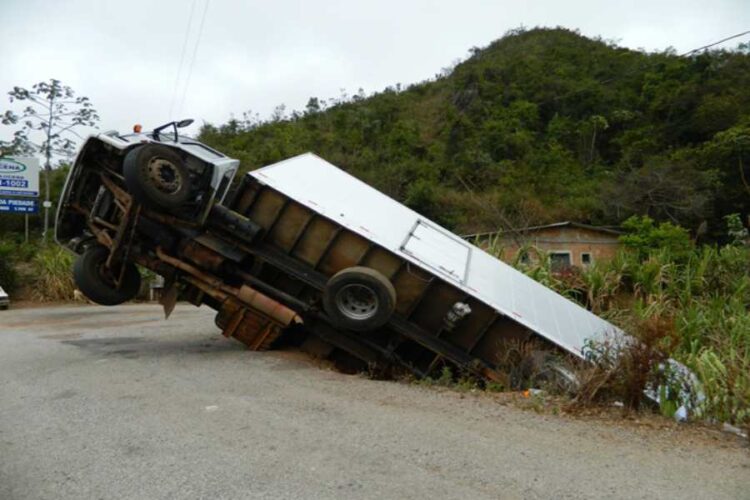Truck accidents may result in severe injuries, significant property damage, and numerous legal complexities. Victims seeking compensation want to know who should be liable for the truck accident. Truck accidents involve multiple parties, each of which could bear differing degrees of responsibility. Let’s examine the primary parties involved in truck accidents, shedding light on their potential liabilities and responsibilities.
Truck Drivers
Truck drivers are typically the first party considered in any accident involving commercial vehicles. When a truck driver is negligent or fails to adhere to road regulations, they become a source of liability. Factors that contribute to a driver’s liability may include distracted driving, driving under the influence, or inadequate training. A driver who texts while driving may endanger themselves and increase the likelihood of accidents involving other vehicles.
In many cases, the actions of the driver are directly linked to the incident’s severity. If the driver was speeding or misjudged a maneuver, they could face direct accusations of recklessness. In Georgia, a specialized lawyer can detect Georgia truck accident liability according to the laws of the state. The trucking industry’s strict regulations demand that drivers maintain a high level of professionalism, making them a focal point in liability discussions.
Trucking Companies
Trucking companies may also share liability for accidents caused by their employees. These companies are responsible for ensuring that their drivers receive adequate training and adhere to all safety regulations. Failure to perform maintenance on trucks or overlooking drivers’ histories can lead to a company being held accountable for an accident. If a company knowingly allows an unqualified driver to operate a truck, they might be seen as complicit in any resulting incidents.
The company’s insurance policy generally covers incidents involving its drivers; however, proving the company’s negligence might require diligent research. Hiring practices, driver oversight, and vehicle maintenance records can all come into play. In many cases, victims can pursue claims against both the driver and the trucking company, as two separate entities contributed to the event.
Truck Manufacturers
Manufacturers of truck components may be liable if defective parts contribute to an accident. If a truck’s brakes fail due to a manufacturing flaw, the manufacturer could face significant legal repercussions. Manufacturing defects that lead to improper functioning may be classified under product liability law and allow victims to seek damages from the company responsible for the part. This holds true even when the truck itself has been appropriately maintained.
Victims must demonstrate that the part was indeed defective and that it directly caused the accident to establish liability. Any kind of evidence (maintenance logs or expert testimony regarding the part’s functionality) may prove invaluable. The implications of product liability can help the recovery process for those injured in a truck accident.
Maintenance Providers
Trucking companies subcontract maintenance services to keep their fleet in good working order. If improper maintenance leads to a malfunction resulting in an accident, the maintenance provider may share liability. Negligent maintenance can manifest in various forms, such as failing to change worn-out tires or neglecting necessary inspections. When vehicle issues arise from a lack of maintenance, accountability can extend beyond just the trucking company.
Victims may pursue claims against both the trucking company and the third-party maintenance provider, especially if there is evidence that the maintenance company failed to meet industry standards. The interplay between multiple parties can further complicate liability. A thorough investigation into the maintenance records and practices of all parties involved can offer better insights into determining fault.
Cargo Loaders
Commercial trucks may have improperly loaded cargo that may contribute to an accident. The loaders or the company they work for may be liable. Overloading a truck or distributing the weight incorrectly can destabilize the vehicle. The loader must follow strict guidelines to ensure safe handling and transportation of the cargo.
Claims against cargo loaders may arise if it can be demonstrated that they failed to adhere to safety regulations or industry standards. Seeking compensation from these parties can provide necessary relief for injured victims. Cooperation between the truck company and loaders can impact the legal process, as both sides will likely seek to establish their level of responsibility.
Government Entities
Government entities may also be held liable in the event of a truck accident. If a poorly maintained road, an ineffective traffic signal, or other negligent government actions lead to an accident, victims might have a case against them. However, pursuing claims against the government can be much more complex due to statutes of limitations and specific legal protections that apply to governmental bodies.
Victims may need to demonstrate that the government entity had prior knowledge of the hazard and failed to act accordingly. Accidents resulting from poor signage or other infrastructure issues are common points of contention. Understanding the nuances of government liability requires careful navigation and, most of the time, the assistance of a legal expert.
Truck accident cases involve a multitude of factors and parties, complicating the quest for justice. By better understanding the roles and responsibilities of the various parties, victims can navigate the paths toward recovery more effectively.









